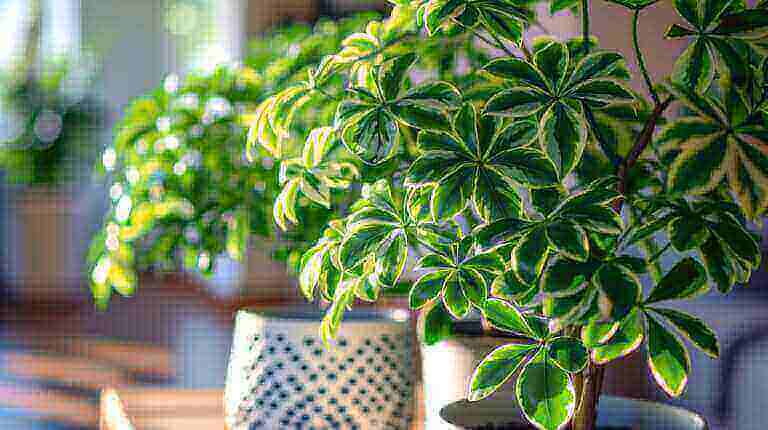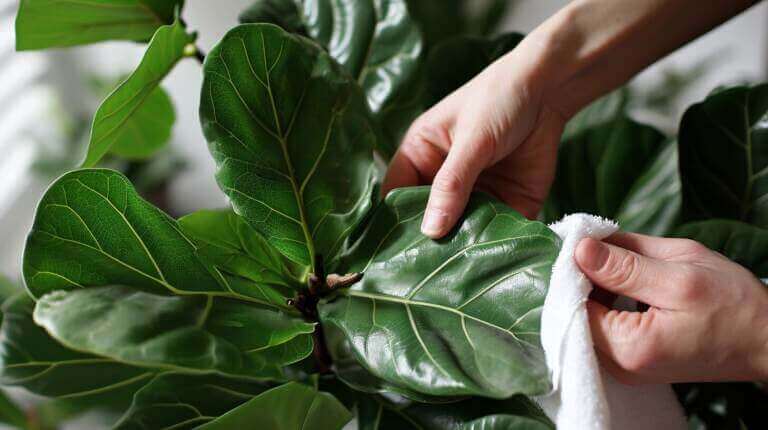How To Revive A Drooping Calathea Plant And Stop Leaves From Wilting
Calathea plants are known for their beautiful leaves, but when they start to droop, it can be a sign that something is wrong. There are several common causes for a drooping Calathea plant, including underwatering, low humidity, rootbound conditions, repotting shock, dusty leaves, and overwatering. Understanding the root cause of the drooping can help you take the appropriate steps to revive your Calathea and get it thriving again.
Key Takeaways:
- Underwatering can cause drooping leaves in Calathea plants. To revive an underwatered Calathea, thoroughly soak the soil with water and allow it to drain completely.
- Low humidity can lead to drooping Calathea leaves. Improve humidity levels by misting the leaves, using a humidifier, or placing the plant on a water or pebble tray.
- If your Calathea is rootbound, repot it into a larger pot or propagate it by dividing the roots. Allow the plant time to adjust after repotting to prevent drooping.
- Clean dusty leaves regularly to prevent drooping. Wipe them down gently with a tissue or damp cloth.
- Other causes of drooping Calathea include overwatering, lack of nutrients, poor drainage, inappropriate temperature and humidity, cold drafts, poor light conditions, age of the plant, and pests/diseases.
Underwatering and How to Revive Your Dying Calathea
Underwatering is a common cause of drooping leaves in Calathea plants. When the soil becomes dry, the cells in the foliage lose their water content, leading to drooping leaves. To revive an underwatered Calathea, thoroughly soak the soil with water and allow it to drain completely. This will help replenish the plant’s water content and restore its health.
If you suspect that your Calathea is underwatered, check the moisture level of the soil by inserting your finger about an inch into the soil. If it feels dry, it’s a clear indication that the plant needs water. When watering, make sure to water the plant until the water starts to drain from the bottom of the pot. This will ensure that the soil is evenly moist and that the water reaches the plant’s roots.
Once you’ve watered the Calathea, monitor the soil moisture level regularly to prevent future underwatering. Remember that Calatheas prefer slightly moist soil, so it’s important not to let the soil dry out completely between watering sessions. Providing consistent moisture will help your Calathea thrive and prevent drooping leaves caused by underwatering.
| Signs of Underwatered Calathea | Revival Steps |
|---|---|
| Leaves drooping and curling inward | Thoroughly soak the soil with water until it drains from the bottom of the pot |
| Yellowing or browning of leaves | Monitor soil moisture and water regularly to maintain slight moisture |
| Dry, crispy edges on leaves | Ensure thorough watering to reach the plant’s roots |
Low Humidity and Improving Humidity Levels for Your Calathea
Calathea plants thrive in humid environments, and low humidity can cause their leaves to droop. To ensure your Calathea stays healthy and vibrant, it’s essential to improve humidity levels. Here are some effective methods:
- Mist the leaves regularly: Use a spray bottle to lightly mist the leaves of your Calathea. This helps to increase humidity around the plant.
- Water or pebble tray: Place your Calathea on a tray filled with water or pebbles. As the water evaporates, it creates moisture in the surrounding air.
- Use a humidifier: Invest in a humidifier to maintain consistent humidity levels in the air. This is especially beneficial in dry climates or during the winter months.
- Group with other tropical houseplants: Cluster your Calathea with other plants that also require high humidity. The plants will create a microclimate that helps to increase humidity levels.
By implementing these methods, you can create a more favorable environment for your Calathea and prevent drooping caused by low humidity.
“Adequate humidity is crucial for the health and wellbeing of Calathea plants. By providing the right moisture levels, you can help your Calathea thrive and maintain its stunning foliage.” – Expert Gardener
Remember to monitor the humidity levels and adjust your methods accordingly. Each Calathea variety may have specific humidity requirements, so it’s essential to research and cater to the specific needs of your plant.
| Method | Effectiveness | Difficulty |
|---|---|---|
| Misting the leaves | Medium | Easy |
| Water or pebble tray | Low | Easy |
| Humidifier | High | Medium |
| Grouping with other plants | Medium | Easy |
Method Effectiveness and Difficulty Ratings
The table above provides a quick reference guide to the effectiveness and difficulty of each humidity-improving method. While all methods can help increase humidity to some extent, a humidifier offers the most consistent and reliable results. However, it may require more effort to set up and maintain compared to other methods.
Remember, maintaining the appropriate humidity levels for your Calathea is crucial for its overall health and appearance. By following these tips and exploring the different methods, you can create an optimal environment for your Calathea plant to thrive.
Rootbound Calathea and How to Fix It
If your Calathea is experiencing drooping leaves, it could be due to being rootbound. This occurs when the roots have outgrown the pot and become crowded, restricting their ability to take up water and nutrients. To fix a rootbound Calathea, you will need to repot it into a larger pot that allows room for the roots to spread and grow.
When repotting a rootbound Calathea, gently remove the plant from its current pot and loosen the roots to encourage new growth. Choose a new pot that is one to two sizes larger than the current one, ensuring it has drainage holes. Place a layer of fresh, well-draining soil at the bottom of the new pot, then position the Calathea in the center. Fill in the remaining space with more soil, gently firming it down around the roots.
Repotting Shock
After repotting, your Calathea may experience some shock as it adjusts to its new environment. This can result in further drooping of the leaves. To minimize repotting shock, water the plant thoroughly after repotting and place it in a location with indirect light. Avoid placing the Calathea in direct sunlight or near drafts, as these can further stress the plant.
Provide your repotted Calathea with consistent care, including watering when the top inch of soil feels dry and maintaining appropriate humidity levels. It may take some time for the plant to recover from repotting shock and regain its health, but with patience and proper care, your Calathea should start to thrive again.
| Signs of a Rootbound Calathea | How to Fix a Rootbound Calathea |
|---|---|
| Visible roots emerging from the drainage holes | Repot into a larger pot with well-draining soil |
| Stunted growth and yellowing leaves | Loosen roots during repotting and provide new growth space |
| Frequent wilting and inability to retain water | Water thoroughly after repotting and ensure proper drainage |
Dusty Leaves and How to Clean Them
Over time, dust can accumulate on the leaves of your Calathea, hindering their ability to absorb water and sunlight properly. This can result in drooping leaves and a lackluster appearance. To keep your Calathea healthy and vibrant, it’s important to regularly clean its leaves to remove dust and debris.
There are a few simple methods you can use to clean dusty Calathea leaves. One option is to gently wipe each leaf with a soft, damp cloth or tissue. This will help remove the dust and allow the leaves to breathe and photosynthesize more effectively. Be sure to be gentle to avoid damaging the delicate foliage.
Another method is to create a gentle cleaning solution by mixing a small amount of mild liquid soap or plant-based insecticidal soap with water. Dip a clean cloth or sponge into the solution and wipe down each leaf carefully. This can help remove dust as well as any pests or pests’ eggs that may be present on the leaves.
Additionally, you can use neem oil to clean and protect your Calathea’s leaves. Neem oil has natural cleansing properties and can help deter pests. Dilute a small amount of neem oil with water and spray it onto the leaves, or gently wipe the leaves with a cloth soaked in the diluted neem oil. This will not only clean the leaves but also provide a protective barrier against pests.
Regularly cleaning your Calathea leaves not only improves their aesthetic appearance but also ensures that they can function optimally. By removing dust and debris, you allow the leaves to absorb sunlight and water more efficiently, promoting their overall health and preventing drooping. Take the time to clean your Calathea’s leaves regularly, and you will be rewarded with a thriving and beautiful plant.
Other Causes of Drooping Calathea and Tips for Revival
In addition to the common causes mentioned earlier, there are other factors that can cause your Calathea to droop. One such factor is overwatering. Too much water can drown the roots and lead to root rot, resulting in wilting leaves. To avoid this, make sure to water your Calathea only when the top inch of soil feels dry. This will prevent overwatering and promote healthy root growth.
Lack of nutrients and fertilizer can also contribute to drooping Calathea. These plants require regular feeding during the growing season to stay healthy. Look for a balanced liquid fertilizer specifically formulated for houseplants, and follow the package instructions for application. Providing the right nutrients will help your Calathea regain its vitality.
Poor drainage can also be a culprit behind drooping leaves. If your Calathea is sitting in waterlogged soil, the excess moisture can suffocate the roots and cause wilting. Ensure that your plant’s pot has drainage holes to allow excess water to escape. If your current pot doesn’t have drainage, consider repotting it into a container that does.
Finally, environmental factors such as inappropriate temperature and humidity, cold drafts, poor light conditions, and the age of the plant can all contribute to drooping Calathea. These plants thrive in temperatures between 60°F and 75°F (15°C and 24°C) and prefer moderate to high humidity levels. Avoid placing your Calathea near cold drafts or in direct sunlight, as it can stress the plant and lead to drooping. Additionally, if your Calathea is older, it may naturally start to droop as it matures.
FAQ
Why do Calathea leaves droop?
Calathea leaves may droop due to several reasons. Overwatering, low humidity, or exposure to direct sunlight can cause the leaves to droop. It’s important to keep your Calathea in a humid environment, away from direct sunlight, and water only when the top of the soil is dry.
How do I revive a dying Calathea plant?
To revive a dying Calathea plant, first identify the problem. If the plant is overwatered, allow the plant to dry out before watering again. If the plant is under-watered, water the plant thoroughly. If the plant is exposed to too much light, move it to a location with indirect light.
Why are my Calathea leaves curling?
Curling leaves on a Calathea plant can be a sign of low humidity or underwatering. Increase the humidity level around your Calathea and keep the soil consistently moist to prevent the leaves from curling.
How do I stop my Calathea leaves from drooping after repotting?
Drooping leaves after repotting can be a sign of transplant shock. Give your Calathea time to adjust to its new pot. Keep the plant in a stable environment with indirect light, consistent temperature, and high humidity. Water the plant when the top inch of the soil is dry.
How do I treat a Calathea plant with brown leaf edges?
Brown leaf edges on a Calathea plant can be a sign of low humidity or underwatering. Increase the humidity level around your Calathea and keep the soil consistently moist to prevent brown leaf edges.







